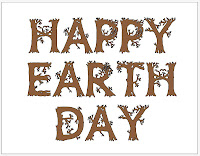Need a pretty but inexpensive project for Mother’s Day? All you need is an old baby food jar, tissue paper, white glue and a couple of green pipe cleaners.
1. Tear blue tissue paper into small little strips. Make a 50/50 mix of white glue and water, brush on the outside of a baby food jar, and apply overlapping strips of tissue paper. Continue until the jar is covered. Brush a final layer of mixture over all to smooth the surface before it dries. Let dry.
2. My inspiration for the flowers comes from “Tissue Paper Flowers” by the editors of Klutz. Proportion of the flowers to the jar is important, so I’ve made a pattern that you can download HERE. You make a small green folded “nubs” on one ends of the pipecleaners, slide on two yellow circles, and two white star flowers. Use a small amount of clay or playdough inside the jar to support the stems.


 9:44 PM
9:44 PM
 keprok
keprok




































